1999
October 26, 2010
The thing about Salad Days
And Golden Ages
Is that you never know you're in them
Until years later
When their reflected glow is almost painful.
The thing about Salad Days
And Golden Ages
Is that you never know you're in them
Until years later
When their reflected glow is almost painful.
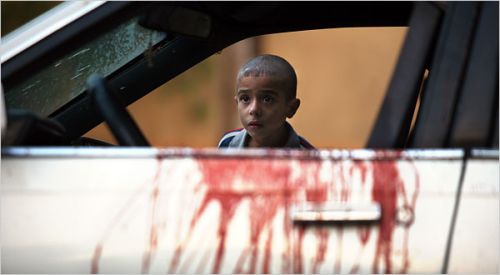
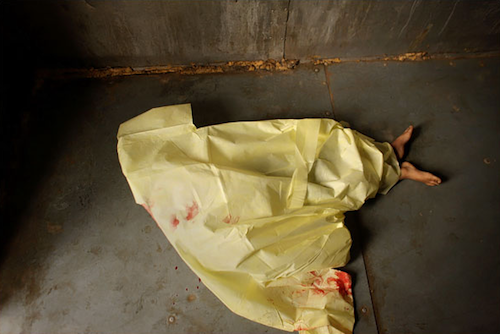
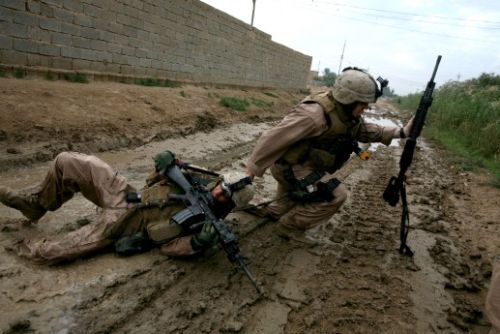
João Silva's photography is easy to spot in Times, it is almost always startling close to something terrible. Covering wars in Africa, The Balkans, Chechnya, Iraq, Pakistan, and Afghanistan he has seen more tragedy than most of us can imagine. Silva is also also a solid writer. The Bang-Bang Club: Snapshots from a Hidden War is a harrowing portrait of war in South Africa and In the Company of God is an intense portrait of Iraqi Shiites during the war.
The New York Times reports that João was seriously injured when he stepped on a mine Saturday in Kandahar province. He was evacuated to a military hospital. There has been no update on his condition.
Update: The Times reports Mr. Silva will lose his legs. Many testimonials and tributes can be found here.
I suspect the NYTimes writer of this piece on the fascinating and disturbing phenomenon of honeybee colony collapse disorder was having a bit of fun w/ this one:
"One perverse twist of colony collapse that has compounded the difficulty of solving it is that the bees do not just die — they fly off in every direction from the hive, then die alone and dispersed. That makes large numbers of bee autopsies — and yes, entomologists actually do those — problematic."
"The first steps were awkward, partly because the Army lab was not used to testing bees, or more specifically, to extracting bee proteins. “I’m guessing it was January 2007, a meeting in Bethesda, we got a bag of bees and just started smashing them on the desk,” Charles Wick said. “It was very complicated.”
The process eventually was refined. A mortar and pestle worked better than the desktop, and a coffee grinder worked best of all for making good bee paste."
"Another possibility, he said, is a kind of insect insanity."
I met several awesome artists today. One was Cassandra Jones who creates art from found photographs. She makes elaborate large-scale wallpaper from repeating pictures of cheerleaders, flamingos, lightning, etc., etc. and she he makes really super short video pieces. One of my favorites is above. What's not to love about a neo-Muybridge?
Sometimes just to torture myself I'll browse the Sotheby's Auction Catalog (registration required)... painful, but fun.
I'm a sucker for any images from Sally Mann's Mother Land series:
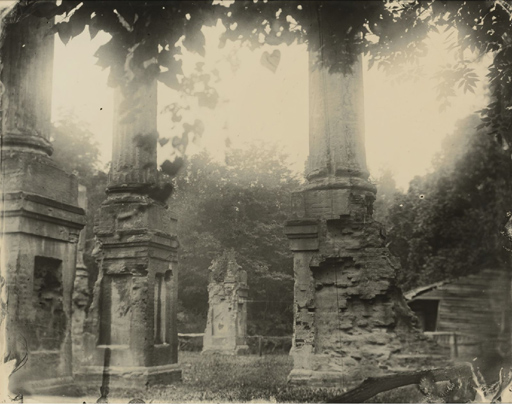
This one is called Untitled (Deep South #9) and man would it look nice in the bedroom.
Don't know the series? Read these reviews/posts: Indy Week, Musings, Arts Central,
Secret society of pretty girls who read Catcher in The Rye.
Secret society of guys who wear chicken shirts.
Secret society of vaguely familiar acquaintances.
Secret society of ladies who smell of butterfly milk.
Secret society of pretend sleepers.
Secret society of guys who carry briefcases but might be in metal bands.
Secret society of guys with beards who read Epictetus.
Secret society of quiet farters.
Secret society of contagious yawners.
Secret society of guys who nod to other guys even though they have no idea why they are nodding.
Secret society of artists who might be drawing you, but are actually drawing monsters.
Secret society of men who are probably pirates.
Secret society of humans from the future (this is how they study us).
Secret society of children (who are involved in too many secret societies to list in this forum).
Secret society of people who consciously make eye contact.
Secret society of people who studiously avoid eye contact(who by the way are involved in a fierce silent battle with the secret society listed above).
Secret society of people with broken hearts and other hidden wounds.
Secret society of listmakers who search out the invisible.
Liu XiaoFang's was one of the photographers chosen for reGeneration2, a selection of "50 photographers of tomorrow" curated by the Swiss Musée de lElysée. One of her images graces the cover of the Aperture foundation catalog of the exhibition. I don't know much about this photographer and have only seen her work online at the 789 Gallery. I was wondering if anyone out in internet world had a better link. I find the work striking but cold and would like a bit more context to see if it warms me up.
Robots from raul gutierrez on Vimeo.
My kids love playing robots.
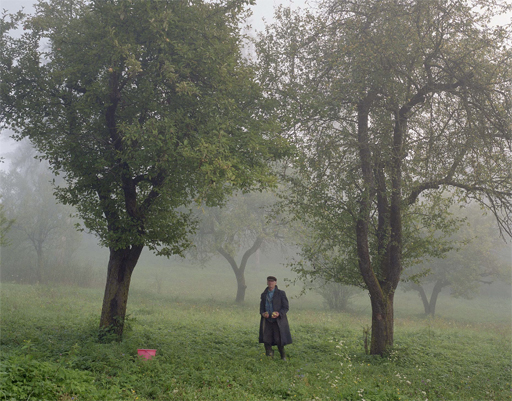
Someone mentioned David Leventi's photography of opera houses to me, so I looked up the site. The opera houses didn't do much for me (architectural photography rarely gets me out of bed), but I really enjoyed his portfolio of Romania images which he titles Romania Revisited. In his statement he writes,
"Romania Revisited retraces my great-grandfather’s footsteps into an unexpected past. Based on stories told by my father and grandmother, I traveled to Romania with a 4x5” large format view camera, collecting lost memories on a journey through a country now struggling to put behind it a lifespan of tyranny, while all the best and brightest who dared or were able to left."
Oscar Fernado Gomez is a cab driver in Monterrey, Mexico. He shoots fast and raw with an eye for the absurd. I can't wait to see more. (via fotoregia)
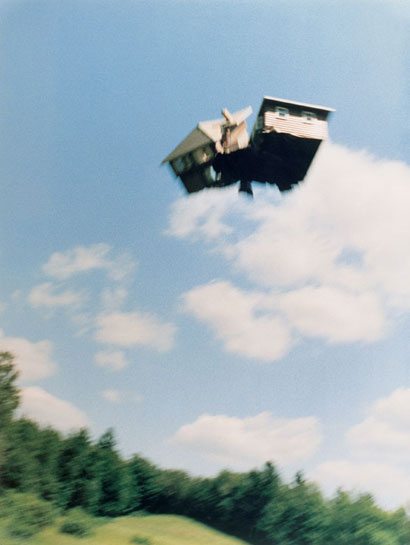
Every few years I find myself back at Peter Garfield's portfolio site admiring his Mobile Holmes project. It helps to know that no photoshop was involved, and also that it's not exactly what you think. (via William Lamson)
Today all this has changed. Siem Reip, or rather the nearby ruins of Angkor Wat are on the global must-see tourist list. The population of the city has increased 20 fold and is circled by 5 star hotels filled with foreigners on package tours. Thai phtographer Miti Ruangkritya's project On the Edge views the city at a distance from the vantage point of someone approaching (or perhaps momentarily escaping) the city... The effect is a sort of a topsy turvy South East Asian version Tati's film Play Time, a film about Paris, but in which Paris is only seen in distant reflection. The pictures are both familiar and foreign, and loaded with a dusty melancholy of seeing the underbelly of an encroaching world. (via HHS)
There's a poem I come back to every few years titled 'On Aesthetics' by Kenneth Koch. It runs about 20 pages of the book One Train and it never fails to delight. I'm not much of a poetry guy, but I love this poem.
A tiny excerpt:
#44 AESTHETICS OF DANTEInvite your best friends
To go out with you in a boat
That's magic and can go anywhere
And sail and talk, and talk and sail,
Until you find Beatrice
Like an endangered species
With luminous antlers
Rising through the Medieval dark.
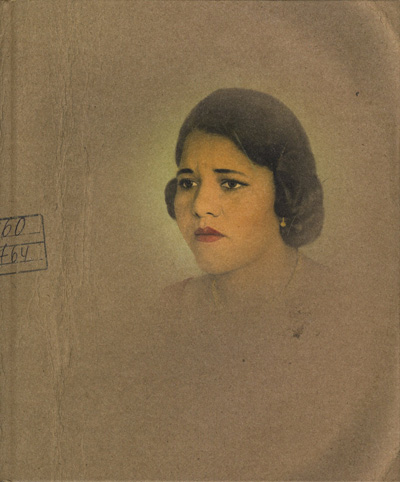
I'm excited about a show opening in a few weeks at Yossi Milo titled Retratos Pintados. It's an exhibit hand-painted Brazilian vernacular photographs from the collection of Titus Riedl. My grandparents in Mexico had photos like these around the house and I've always loved the form. A book with the same title with 60 some odd images was just released by Nazraeli Press. The forward is by Martin Parr. He writes in the intro:
"Nothing has stopped me in my tracks more than when I was first introduced to a set of images collected by Titus Riedl, while attending a Latin American photo forum in São Paulo. If you visit a house in the northeast of Brazil, you are very likely to see a photo painting on the wall. This is a tradition that dates back many years, when a black and white image was not deemed exciting enough. Painted photos are a way of bestowing status on members of your family (both dead and alive) and giving them an iconic, almost saint-like look. When the roving dealers visited these houses, in search of commissions, they were able to facilitate any dream. They could bring back the dead, dress you in expensive clothes and jewellery, make you look years younger. Although these images are still produced, they are now more likely to be computer-generated rather than hand-painted. As I was keen to see the last of these artists in action, Titus decided to arrange an introduction. We went to my hotel room and made the edit that you see here. As another analogue tradition dies, we offer the portraits in this book as a testament to a most remarkable method of creating portraits. Let the dream live on."
The book is definitely high on my wishlist and the show is marked MUST NOT FORGET on my calendar.
RELATED: Who We Were, Photostudio Vernacular, H C Anderson's Greenville Mississippi, Romualdo Garcia, Philip Kwame Apagya, Seydou Keita
Pao Houa Her is a Hmong refugee who is studying in the Yale Graduate program for photography. Her website features a project titled Coming of the Metal Bird which is simultaneously familiar and odd. Describing the project, she writes, "A great big silver metal bird carried my family from Thailand in 1987 into the cold tundra of Minnesota. We arrived at a small cramped studio apartment which was to be our home. Inside the apartment was a green triangle shaped tree with lights that lit up in differnet shades of greens, yellows, blues and reds. Our sponsor had told us that Christmas was coming...." Read More
Just watch it:
Gabriel's Dream from raul gutierrez on Vimeo.
Each morning G recounts his dreams for me.
Mr. Yee has requested a transcription:
Gabriel: "I was walking in the forest and then... I got lost. I don't know which way I should go, so I went this way, but I saw a ghost in the forest saying, "Ewww I'm gonna get you."
Me: "What did the ghost look like?"
Gabriel: "This big. He was a daddy ghost he said, 'I'm gonna get that boy.'
Me: "And what happened"
Gabriel: "I flied way with my rocket ship on my back. I flied away. And then he he, went all the way up to the sky, but he saw me and I got all of my rockets in my head and on my feet and then I flied away like this. And then... that's the end of that dream."
I became aware of Carlo Gianferro's work through his African Interiors series. Don't know how I missed his Roma Interiors series. Brings to mind the characters of one of my favorite films, Black Cat, White Cat (oddly only available on Region 2 DVD or VHS).
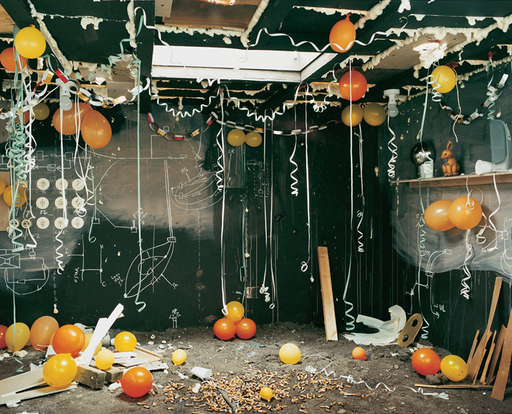
Anne Hardy's images of empty imaginary rooms are one part photography, one part performance art, one part sculpture. Of her work curator Francesco Manacorda writes
"she meticulously turns her studio into a theatre set entirely constructed for the camera’s eye only. Imaginary rooms are given three-dimensional temporary presence only to be translated into two-dimensional records and then destroyed. Always empty, they are full of the residues left behind by the fictional actions of a character or a group of people who have seemingly just left them. Comparable to the effects of the absent ball in the mimed tennis game, her photographs aim at the fictionalisation of the world around her through the construction of sets that rotate entirely round absent actors."
Of her physical process of making her work she writes
"The whole space is structured around the position of the camera. It's put together as a photograph, rather than an installation. Sometimes I go back and reshoot things, moving something 10cm this way or that. The actual moment of taking the final photograph can almost seem - not an anticlimax, but such a tiny thing."
You can read the full interview here. The Manocorda quote can be found in an essay titled Two Dimensional Sculpture.
A huge earthquake struck Yushu province yesterday. It's a remote and beautiful part of the world and conditions there are tough in the best of times. High passes, bad roads, and poor communication are the norm. In my trips there through the region I've made many friends. All must be suffering now.
My guess is that the true scale of this calamity will never be known and the reports of the dead will be wildly underestimated.
An account of my first trip to Jiegu in 1999 (Jiegu is the Tibetan name, Yushu is the official Chinese name): Xining-Garze
News links: NY Times, Wall Street Journal, Google Quake News, Seismic Monitor
Update: Firsthand report of the quake.
Update: The Boston Globe put together a devastating set photographs from the Yushu as in the aftermath of the quake. A story in the NYTimes about post-quake tensions in the area.
Eighteen years ago at dusty backpacker restaurant near the Labrang Monastery I encountered an English language menu item title "Beef Slum Galleon Spiced." At a table was my buddy JP, a few wayward Australians (one named Jennita Gay who was surfing her way around the world, but somehow ended up in Tibet), and a Japanese kid named Goto who rarely spoke. It's possible my friend Oliver was there too. We took delight in what we assumed was translation gone horribly wrong. Ever since then, every few years, JP and Goto—independent of each other—bring up the mysterious and wonderful sounding Beef Slum Galleon Spiced trying to imagine the tortured path that brought the string of words into being.
Today I came across the word "slumgullion". According to the OED it's a North American mining term for the "muddy deposit left in mining sluice" [Slum is an archaic English term for mining mud and gullion is a term for a mining pit]. Miners, being miners, started referring to their stews as slumgullion and soon the definition of slumgullion as a stew began to dominate. The earliest reference I could find to the term was in a book titled "The Best of Kin Hubbard: Abe Martin's Sayings and Wisecracks." The passage is account of a story from 1828 but it's unclear when the passage was actually published. [The OED 's earliest reference is from Mark Twain's Roughing It where the word is used jokingly to describe a "weak drink." By then and through the early 1900's the references are generally pejorative and associated with poverty or just a really crappy stew. Here's another reference, this one from Jack London. There is some speculation that term Mulligan Stew, also a hobo type stew, is a bastardization of slumgullion stew.... This seems like a stretch to me. Recent web references are generally nostalgic— septuagenarians recalling delicious stews of their youth.].
These references piqued my interest in slumgullion recipes which led me to this page and this page where the respective authors take you through their own exploration of the word/stew.
From the 1860's to the 1940's slumgullion seemed to be a relatively common American term. It was mentioned enough in literature and in news reports to turn up in modern google searches.
So it seems that our Tibetan restaurateur was not involved in a seriously misguided translation as we had suspected, but he was probably just using a pre-Communist revolution English dictionary from the 30's (these were common in China in the early 90's) and slumgullion was the proper translation of his dish. Somewhere along the line there was some phonetic spelling going on and gullion became galleon. An easy mistake! Mystery solved!
Tangentially Related: Slumgullion Pass, The Cannibal of Slumgullion Pass, & a NTimes story on John Roberts despite his other failings likes the word slumgullion.
I've seen Noko Jeans links floating around for a few years but always thought they were some sort of joke. Apparently not. Clicking through to the website shows candid video and images from the DPRK. Every time I see video from there it reminds me of China in the mid 80's. The whole enterprise is odd/fascinating and could easily be mistaken for an art project.
HELLO IT'S Noko Jeans! from Noko Jeans on Vimeo.
 Marina Abramovic by Youssef Nabil
Marina Abramovic by Youssef Nabil
Egyptian photographer Youssef Nabil uses the forgotten technique of hand coloring silver gelatin photographs to create images evoking an instant pang of nostalgia. For me they recall Mexican wedding photos from my parent's and grandparent's era (also my own Mexican baby photos), and Mexican movie promo photos, I distrust my instant attraction to the work and yet feel compelled by the technique/images nonetheless.
Putting Gabriel (3) and Raul Andres (5) to sleep tonight, the topic of conversation turned to death. Note the person referred to as Haraboji is the kids' great grandfather. A slightly abbreviated transcript:
Gabriel: Dad?
Me: Yes?
Gabriel: Where is Haraboji's wife?
Me: She died before you were born.
Raul Andres: How did she die?
Me: She was very sick.
Raul Andres: I got sick and didn't die.
Me: Well she was very old got very very sick.
Gabriel: Haraboji is sad. He misses her too much.
Raul Andres: Your abuelito and abuelita died.
Me: Yes.
Gabriel: Do you miss them?
Me: Yes.
Gabriel: Will you die?
Me: Yes.
Gabriel: I don't think that is a good idea.
Raul Andres: How would we live?
Me: I don't think it will happen for a long long time when I'm very old. You'll be men by then.
Raul Andres: Will everyone die? Everyone?
Me: Someday.
[quiet]
Gabriel: Then who will live in the world?
Me: Well, all the babies who are being born today. They'll grow up and have new babies.
Gabriel: But if we die, they'll never know us.
[quiet]
Raul Andres: I know what happens when you die. They put your body in the ground and cover it up.
Gabriel: So scientists can find you later?!
Raul Andres: And they put a rock with your name on top to remember.
Gabriel: But how can you remember everyone?
Me: Well, sometimes even after we die we give things to people. Like Gabriel even though you never met my Abuelito he gave you his ears, and Raul Andres, even though you never knew him, you have the same eyes. So I remember him every day when I look at you guys and you remember him even though you never knew him.
Gabriel: I have your Abulitos ears.
Raul Andres: I have your Abulitos eyes.
[quiet]
[The sound of two kids alseep.]
Related: Abuelito's Ears, Bloodlines
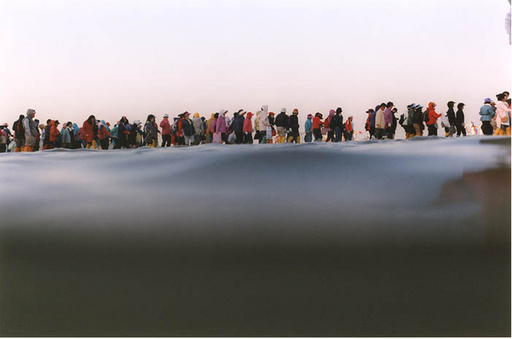
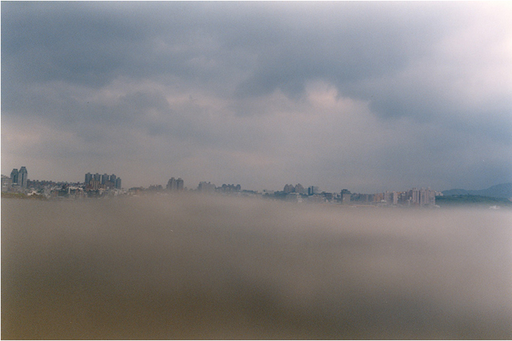
I'm a huge fan of Asako Narahashi's work. Her book Half Asleep and Half Awake In The Water is one I've turned to many times over the last two years (my copy is was signed by the artist at an opening here in NY, but ironically was waterstained by one of my kids a few hours later). Ms. Narahashi is now showing a new related body of work titled Coming Closer and Getting Further Away which she bills as the "oversees version" of Half Asleep. These photos taken in Dubai, Paris, Korea, Brooklyn, Taiwan, and Germany are infused with her signature lyricism, but unfortunately the full project isn't available online. You can see some images from Dubai here and from Korea here. (via japan foto info)
A few months ago photographer John Maloof discovered a huge cache of photographs and negatives (many unprocessed) by an unknown Chicago photographer named Vivian Maier. It was an incredible find and a great story. I've been following along ever since and eagerly look forward to John's updates of Maier's work. A few recently rediscovered images:



Want learn more about the photographer? She now has a wikipedia page.
![]()
Just discovered this Macpaint file collecting screenshots of various early Mac icons (some finder icons, some in-application icons, some resedit icons). Most are circa 1985, although several are later. 10 points to the person who can name them all.
Need a cheatsheet? Check out the insanely detailed Vintage Mac Museum which not only has icons, but also houses screenshots, of many — but not all — of these apps.
Want the story the sad mac icon's birth: Read here.
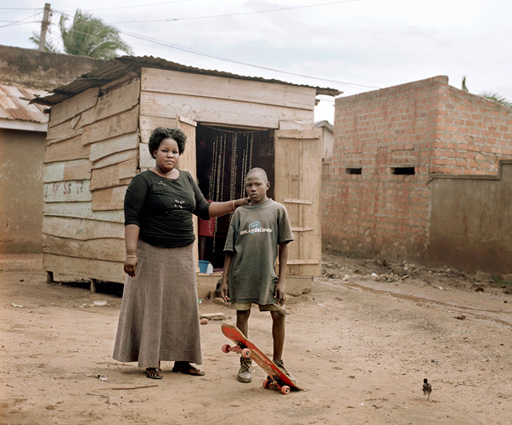
Swiss photographer Yann Gross' portfolio of skateboarders in Uganda is excellent. He's also made a short documentary about the skateboarders. Fascinating comparing the portfolio images to the video.
Gross' website houses a number of bodies of work (everything from an imagined modern day life of Czech composer Leos Janacek to stories of deforestation in Brazil) and deserves exploration. (via Colin Pantall's photography blog)
Mike Brodie who goes by Polaroid Kidd, primarily photographs what he calls travel culture — some might call it domestic backpacking culture, or modern hobo culture. Whatever the name, he makes plenty of compelling images, including the one above which probably has nothing to do with travel culture.
Brody's Gallery can be found here.
More Images & Even more images
If travel culture interests you, also check out the work of Todd Seelie who is often out there on the road and having more fun than most of us... He also has more websites than most of us: Blog, , Portfolio Site, & Of Quiet.